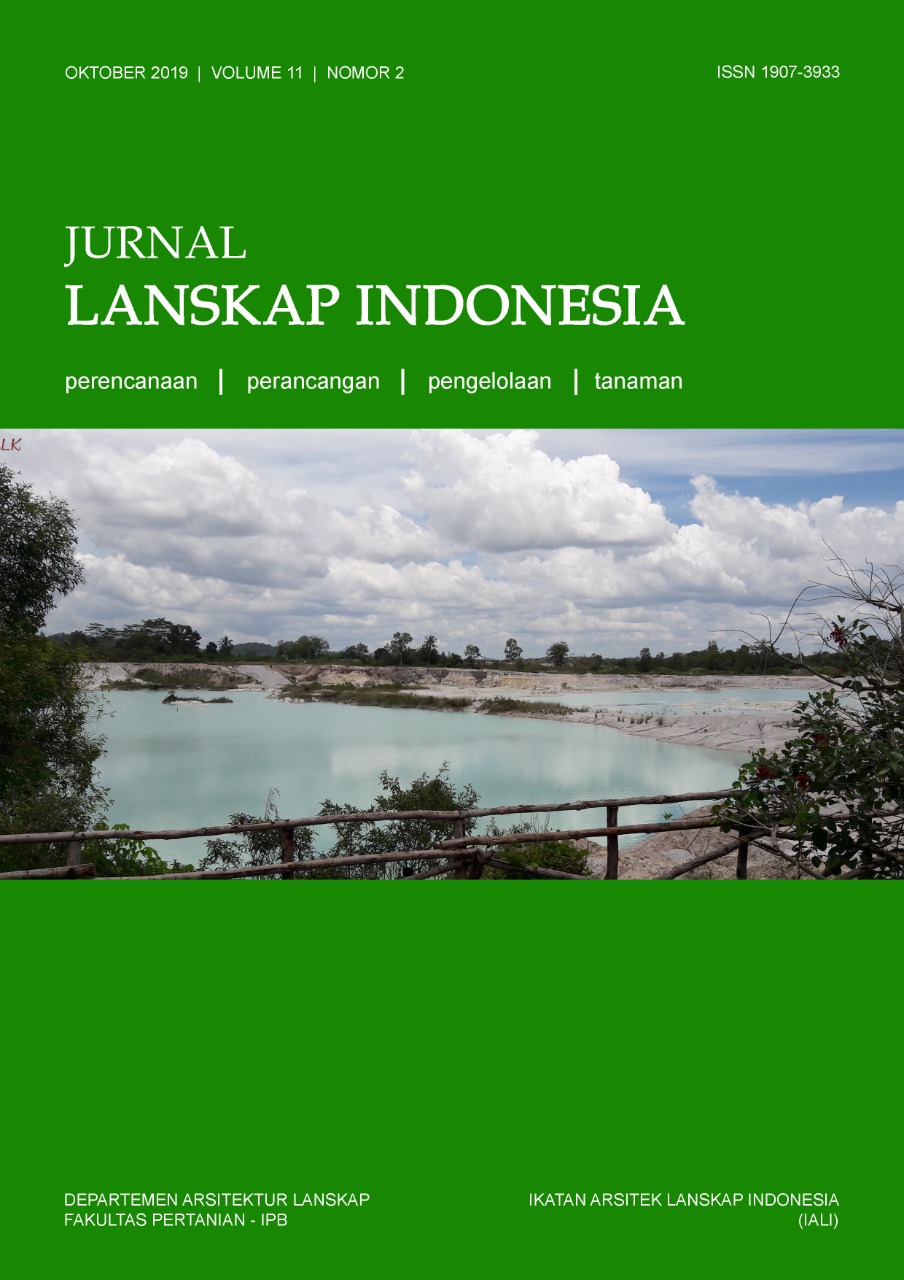Kajian Potensi Lanskap Kota Medan untuk Pengembangan Wisata Sejarah
Abstract
Medan is capital city of North Sumatera that established since 1590. Medan City has six historical area which there are many historical objects and landscapes. The six historical area are Kesawan, Maimun Palace, Polonia, Kampung Madras, Pulo Brayan, and Labuhan Deli Old City. The objectives of this study are to produce historical landscapes distribution map and to assess potential of historical tourism in the six historical area. This study used old map of Medan City (year 1913 and 1945) in order to assess for the distribution of historical objects/landscapes that still exist. The value of potential historical tourism obtained from total of authenticity, uniqueness, and tourism supporting factors. The results of the study show that Kesawan area has the most amount of historical objects/landscapes (19) with character of Netherland-Indische Colonial and China Town. Kesawan area also has the highest value of potential historical tourism. Besides that, Maimun Palace area and Polonia area also has high value of authenticity and uniqueness. Maimun Palace has strong character of Melayu Deli Sultanate and Polonia has strong character of Colonial. Location of this two areas are also adjacent with Kesawan area. Therefore, the Maimun Palace and Polonia area has high potential to be developed as historical tourism area.Downloads
This journal permits and encourages authors to post items submitted to the journal on personal websites or institutional repositories both prior to and after publication, while providing bibliographic details that credit, if applicable, its publication in this journal. However, after the article is submitted and published in this journal, it is fully copyrighted by the Jurnal Lanskap Indonesia or JLI. If excerpts from other copyrighted works are included, the author must obtain written permission from the copyright owner and give credit to the source in the article. Then, the writer or reader is allowed to copy, share, and redistribute articles/material in any form. But it must still include the appropriate source and credit because the article in this journal is licensed by Creative Commons Attribution 4.0 International License (CC BY 4.0).
I. Proposed Policy for Journals That Offer Open Access
Authors who publish with this journal agree to the following terms:
- Authors retain copyright and grant the journal right of first publication with the work simultaneously licensed under a Creative Commons Attribution License that allows others to share the work with an acknowledgement of the work's authorship and initial publication in this journal.
- Authors are able to enter into separate, additional contractual arrangements for the non-exclusive distribution of the journal's published version of the work (e.g., post it to an institutional repository or publish it in a book), with an acknowledgement of its initial publication in this journal.
- Authors are permitted and encouraged to post their work online (e.g., in institutional repositories or on their website) prior to and during the submission process, as it can lead to productive exchanges, as well as earlier and greater citation of published work (See The Effect of Open Access).
II. Proposed Policy for Journals That Offer Delayed Open Access
Authors who publish with this journal agree to the following terms:
- Authors retain copyright and grant the journal right of first publication, with the work after publication simultaneously licensed under a Creative Commons Attribution License that allows others to share the work with an acknowledgement of the work's authorship and initial publication in this journal.
- Authors are able to enter into separate, additional contractual arrangements for the non-exclusive distribution of the journal's published version of the work (e.g., post it to an institutional repository or publish it in a book), with an acknowledgement of its initial publication in this journal.
- Authors are permitted and encouraged to post their work online (e.g., in institutional repositories or on their website) prior to and during the submission process, as it can lead to productive exchanges, as well as earlier and greater citation of published work (See The Effect of Open Access).



























